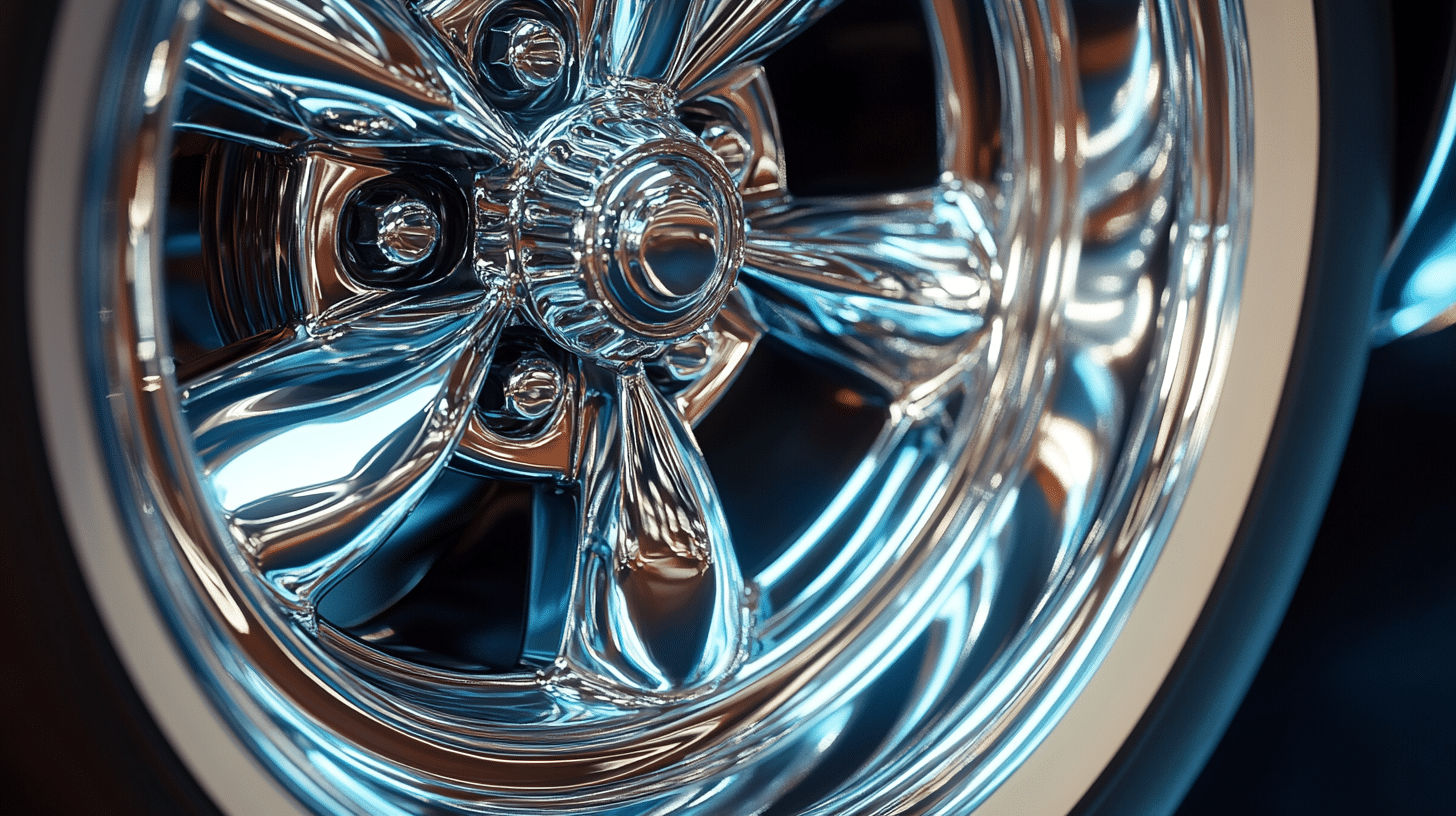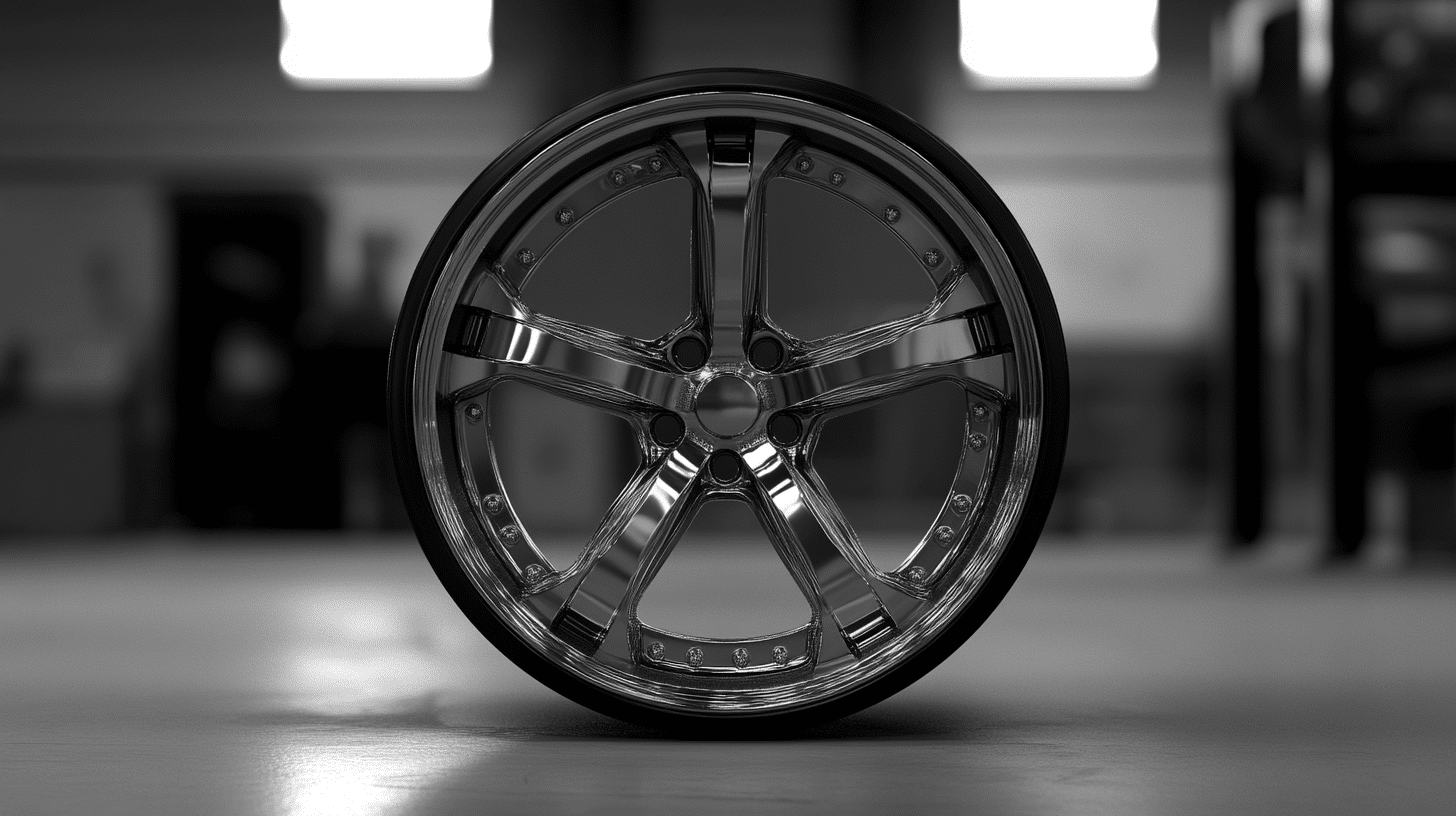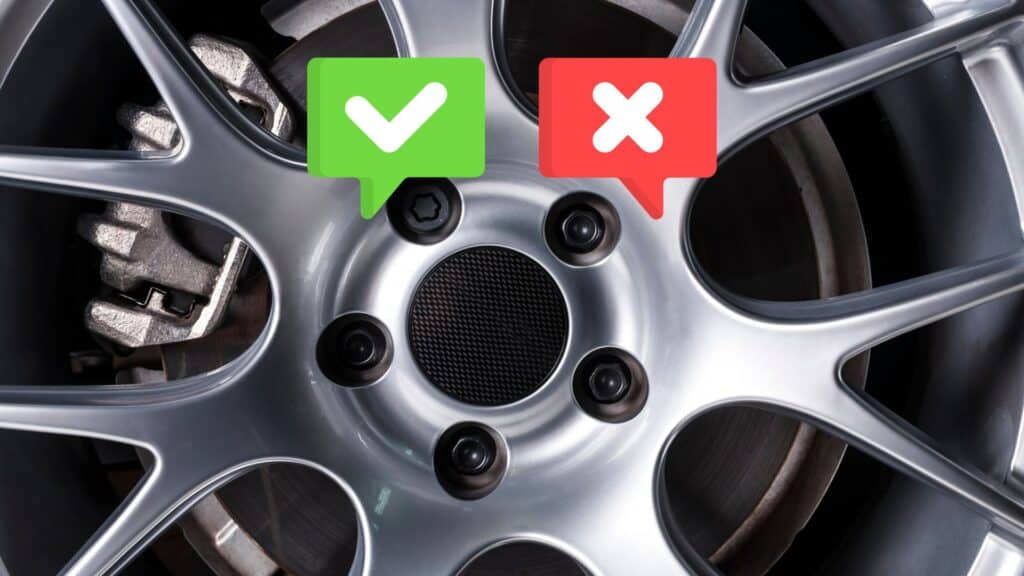Choosing the right wheels for your vehicle can be a daunting task, especially when considering bolt patterns. Many car owners find themselves puzzled by the variety of options available.
The 5×100 bolt pattern is a popular choice, but is it the best fit for your ride?
This article will help you understand the advantages and drawbacks of different bolt patterns, focusing on the 5×100 configuration.
We’ll explore how bolt patterns affect wheel fitment, vehicle performance, and style options.
By the end of this post, you’ll have a clear understanding of whether the 5×100 bolt pattern is the right choice for your vehicle and how it compares to other common patterns.
What is a 5×100 Bolt Pattern?

The 5×100 bolt pattern is a specific wheel configuration that you’ll find on many vehicles.
It features five bolt holes arranged in a circle. If you were to measure the diameter of this circle, you’d find it’s exactly 100 millimeters across.
This setup is popular among compact cars and midsize sedans, offering a good mix of strength and style.
Here are some examples of brands that use this bolt pattern:
- Subaru: Many Subaru models, including the Impreza and Legacy, use this bolt pattern. It’s a good fit for Subaru’s all-wheel-drive systems, providing stability and performance.
- Toyota: Several Toyota vehicles, such as the Corolla and Prius, come with a 5×100 bolt pattern. Toyota chose this configuration for its reliability and wide range of wheel options.
- Volkswagen: Models like the Golf and Jetta often feature the 5×100 pattern. It suits Volkswagen’s mix of sporty handling and everyday practicality.
Pros and Cons of Different Bolt Patterns
| Bolt Pattern | Pros | Cons |
|---|---|---|
| 4-lug |
– Common on smaller, lighter vehicles – Plenty of wheel options for compact cars – Often more affordable |
– Limited load capacity – Not suitable for larger or heavier vehicles – Fewer high-performance options |
| 5-lug (e.g., 5×100, 5×112) |
– Versatile, fits many vehicle types – Good balance of strength and weight – Wide range of wheel styles available |
– Can be confusing due to various diameters (100mm, 112mm, etc.) – May limit wheel choices for some specific vehicle models |
| 6-lug |
– Excellent for larger SUVs and trucks – High load capacity – Good for off-road use |
– Limited options for passenger cars – Often heavier than 4 or 5-lug wheels – Can be more expensive |
| 8-lug |
– Highest load capacity – Ideal for heavy-duty trucks and commercial vehicles |
– Very limited options for regular passenger vehicles – Heaviest wheel option – Usually, the most expensive |
Pros of The 5×100 Bolt Pattern

1. Versatility
The 5×100 bolt pattern shines when it comes to versatility. It’s a popular choice among car enthusiasts because it fits a wide range of vehicles, allowing for easy wheel swaps and upgrades.
This pattern opens up a world of possibilities for customization, as it’s compatible with numerous wheel designs.
Whether you’re looking for a sporty look or something more elegant, you’re likely to find options that fit the 5×100 pattern, making it easier to personalize your vehicle’s appearance.
2. Looks
When it comes to appearance, the 5×100 bolt pattern truly excels, especially for compact vehicles. It provides a balanced and attractive look that complements the sleek lines of smaller cars.
Upgrading to wheels with this pattern can dramatically change your vehicle’s visual appeal. It’s an effective way to make your car stand out on the road without making major modifications.
Many car owners find that simply changing to stylish 5×100 wheels can give their vehicle a fresh, eye-catching look.
3. Safety
Safety is a key advantage of the 5×100 bolt pattern. This configuration ensures that wheels are securely attached to the vehicle, which is crucial for safe driving.
The five-bolt design provides a stable and reliable connection between the wheel and the hub, reducing the risk of the wheel coming loose during operation.
Additionally, when properly fitted, wheels with the 5×100 pattern can contribute to improved vehicle handling and stability.
This is particularly noticeable in compact vehicles, where the right wheel fitment can enhance overall driving performance and safety.
Cons of The 5×100 Bolt Pattern
4. Mostly for Smaller Cars
One of the main drawbacks of the 5×100 bolt pattern is its limited application to larger vehicles.
This pattern is predominantly used in compact cars and some midsize sedans, which means it may not be suitable for bigger vehicles or trucks.
If you own a larger vehicle or are planning to upgrade to one, you might find your wheel options limited with this bolt pattern.
It’s important to consider your long-term vehicle plans when investing in wheels with this specific pattern.
5. Performance Limitations
While the 5×100 bolt pattern is excellent for everyday driving and suitable for most compact car needs, it may fall short for high-performance or heavy-duty applications.
Vehicles designed for racing, off-roading, or heavy hauling often require more robust bolt patterns to handle the increased stress and load.
The 5×100 pattern might not provide the necessary strength and stability for these demanding situations.
If you’re a car enthusiast looking to boost your vehicle’s performance significantly or if you frequently carry heavy loads, you might need to consider alternative bolt patterns that offer greater durability and load-bearing capacity.
How to Choose the Right Bolt Pattern for Your Vehicle
Matching the bolt pattern of your wheels to your vehicle’s specifications is crucial. The right bolt pattern keeps your wheels safely and firmly attached to your vehicle.
This prevents problems like wheel wobbling or, in extreme cases, the wheel coming off entirely.
It also helps your vehicle perform at its best by aligning perfectly with the suspension and brakes.
How to find your vehicle’s bolt pattern:
- Look at Your Wheels: Count the number of bolt holes and measure the diameter of the circle they form. This gives you the bolt pattern (like 5×100).
- Check Your Vehicle’s Manual: The most reliable way to find your bolt pattern is in your car’s manual, usually listed with the wheel and tire information.
- Use Online Resources: Many websites let you input your car’s make and model to find the right bolt pattern. These can be helpful if you can’t find your manual.
Conclusion
Understanding bolt patterns, especially the 5×100 configuration, is key to enhancing your vehicle’s performance, safety, and style.
We’ve explored how this pattern offers versatility for many compact and midsize cars, allowing for a wide range of wheel options.
However, it’s crucial to remember that the right bolt pattern depends on your specific vehicle and driving needs.
Whether you’re looking to upgrade your car’s appearance or improve its handling, always prioritize proper fitment.
The correct bolt pattern ensures your safety on the road and optimizes your vehicle’s performance.
Before making any changes to your wheels, consult your vehicle’s manual or a trusted professional to determine the best bolt pattern for your ride.
Your car’s safety and your driving experience depend on this often-overlooked detail.
Frequently Asked Questions
What Brands Use the 5×100 Bolt Pattern?
Volkswagen, Toyota, Pontiac, Chrysler, Buick, Chevy, Subaru, and Audi use the 5×100 bolt pattern. Wheels with this pattern come in sizes from 14 to 22 inches.
Is Bolt Pattern 5×100 the Same as 5×114.3?
No, the 5×100 and 5×114.3 bolt patterns are not the same. While both have 5 lugs, the 5×114.3 pattern has a larger circle diameter (114.3 mm) than the 5×100 (100 mm), making it incompatible.
What is the Most Common 5 Lug Bolt Pattern?
The most common 5 lug bolt pattern is 5×114.3 (also known as 5 x 4.5). Many automakers have widely used this pattern for decades.
Which is the Most Accurate Tool for Measuring Bolt Patterns?
A bolt pattern gauge is the most accurate tool for measuring bolt patterns. This specialized tool fits over the wheel studs or lug holes, precisely measuring the bolt circle diameter and pattern.


